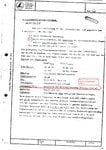swampyankee
Chief Master Sergeant
- 4,161
- Jun 25, 2013
Drgondog and Swampyankee, were there any areas of design that weren't known to designers of WW2 aircraft that led them up blind alleys looking back?
This is something I'd have to give a lot of thought to. I don't think there were too many blind alleys of aircraft that entered WW2 service, although there were a couple of aircraft that probably would not have been accepted into service had they been developed in peacetime, one being the Curtiss SB2C.
I would think that two big areas would be ergonomics and damage tolerance. The efficiency of the pilots of the F4U and P-38 were compromised by cockpit design.

